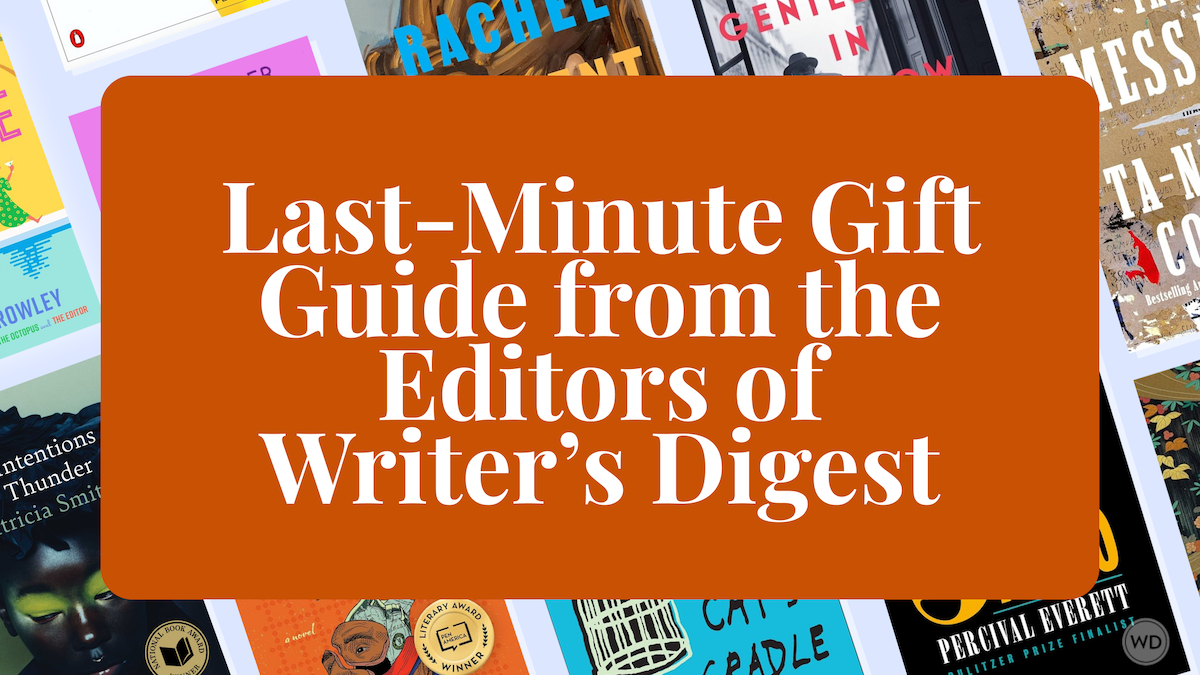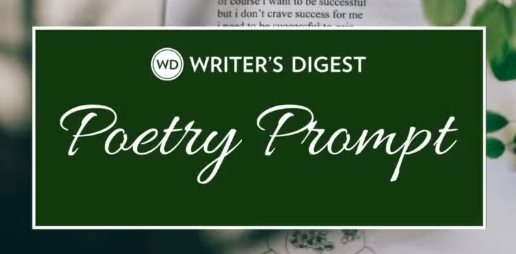How to Organize Your Story Ideas
The best ideas can start out running wild—but you’ll need to train them onto the page if you want to write that novel you have inside of you. Here’s how.
This article appeared in the January 2010 issue of Writer's Digest. Click here to get the issue for yourself.
After Truman Capote nearly destroyed himself writing his groundbreaking bestseller In Cold Blood in 1965, he was quoted as saying that his next book, a novel tentatively titled Answered Prayers, would be easy by comparison. “It’s all in my head!”
And that was the problem. Capote was a perfectionist, and the novel in his head was an untamed beast. His standards were so impossibly high that when he died in 1984, he’d spent the better part of 19 years writing, rewriting, missing deadlines, publishing excerpts, drinking himself into a frenzy—and never finishing the work.
What writer hasn’t had a difficult time putting an idea into words—especially an idea for something as complex as a novel? I often have a million ideas bouncing around in my head like puppies at the pound. I want to write about themes of love, usually reckless love, and mystery. I want to be profound and funny, too. I want to take readers to places they’ve never imagined and make them feel things they haven’t felt before. And, to top it all off, I want to make the words themselves do extraordinary things—to, for instance, evoke the precise sound of an ancient jazz quartet playing a Sunday brunch in the wrong end of the French Quarter.
Of course, I also want the resulting work to be a bestseller.
Sound familiar?
The desire to write The Great American Novel is like an overactive beast that needs obedience school. If you’ve ever had a dog, you know what I mean. Dogs are pack animals. You’re supposed to be the leader. You’re supposed to be in charge. If you’re not, you’re in trouble. Dogs will run wild unless you focus them with a calm, centered mind, an assertive hand, and a strong sense of purpose.
The same is true with your novel. Ideas often start with boundless energy, vying for your attention. But when you get them on the page, they don’t always live up to how you thought they would be. A plotline feels contrived. An emotion falls flat. When this happens, you can easily feel defeated. You work and rework a paragraph or chapter, and it just doesn’t feel like it’s doing all the things you need it to do. When your ideas run wild, it’s too easy for them to frustrate and eventually overwhelm you. And this is where many writers give up. But you shouldn’t.
You just need to learn how to tame your beast.
Establish a Calm, Centered Mind.
The television is blaring. Your loved one has no idea where the car keys are. Your neighbor is giving salsa lessons in his backyard. You live in a swirl of noise and confusion, so how are you supposed to be focused enough to cultivate a quiet place within you to write? Easy. Take out a rolled-up newspaper and whack your world on its hindquarters—not hard, but just enough to get everyone’s attention, including your own. Nonexistent boundaries, unfocused expectations, and lack of routine are the writer’s downfall. You need to be your own pack leader.
Make your workspace your sanctuary. Keep office hours. Close the door if you can. If you can’t, put on earphones and listen to music. Writing is a meditation on life. You need to feel alone in the world so that you can be objective about it.
Don’t ever panic. Keep in mind that even great writers like F. Scott Fitzgerald and Ernest Hemingway needed editing. You can always go back and fix what doesn’t work. Nothing is perfect the first time out.
Don’t despair. Some writing days are better than others. If you feel stuck, move on or just take a break and come back to it tomorrow. A night’s sleep often makes a world of difference.
Don’t place yourself in competitive situations while you’re working on a book. Losing a “first-chapter” contest or workshopping a book-in-progress can lead to second-guessing. It’s best to finish your draft before you ask for any critical evaluation. Sometimes when you’re trying to progress through the early stages of a novel, writing groups can be like the blind leading the potentially sighted.
While working on your draft, don’t buy the latest bestseller and try to figure out what it has that your book is missing. The best way to write a bestselling book is to write a book that you could give to anyone, including your mother-in-law and that salsa-dancing neighbor. Novels that really work are books that people can see their own hearts in. They’re books that make people feel that you’re writing about them. The best way to write such a genuine work is to write from an authentic part of yourself, rather than being distracted by what’s selling and why.
Think of yourself as an athlete. Exercise. Eat right. If you’re driving yourself crazy with work, stop and invite a friend to meet for coffee. Balance is key.
Don’t be afraid to set your own pace and create your own work in a way that makes the most sense for you. Yes, your favorite author puts out a book a year, but you don’t need to. You need to create a process that works for you and write your own work in your own time frame.
Study Your Breed.
Just as you can’t easily train a Chihuahua to retrieve ducks—it’s just not in its nature—you can’t write a book without thinking about what the reader demands from the genre. Every book, just like every breed, brings with it a certain set of natural expectations. Historical romance must address history. Mysteries must have some level of, well, mystery. Literary books are usually not plot-focused.
Understanding the “breed” of your book is the first step in bringing your novel to the page. Once you create a clearly defined set of expectations, you can train yourself to stay within them—and soon you’ll be able to sit, roll over and fetch with the best of them.
When Nancy Horan wrote the bestseller Loving Frank, a historically imagined novel about the tragic love affair of Frank Lloyd Wright and Mamah Borthwick Cheney, she chose a task with a rather large laundry list of expectations. She had to, first and foremost, create characters based on real people. In the case of Mamah, not much had been written about her, and only a few documents had been left behind. What was widely known was that Mamah was a great beauty who had left her young children and perfectly respectable husband for Frank—and who had done so in an era when those choices were especially taboo. Horan’s challenge, then, was to make the woman sympathetic, while imagining the great pain and suffering Mamah’s decision must have caused both herself and those around her. Horan’s Mamah also had to have intellect and spirit so that she didn’t seem like a mindless follower of the architect.
In effect, Horan had to crawl into Mamah’s psyche and make it her own.
Of course, Frank also had to be handled with care. History has not always been kind to him. Biographers have depicted him as arrogant, vain, unreliable, and largely unschooled (because of his lack of structural training, many of his buildings are beautiful but flawed); he was not an easy subject to endear to modern readers. But Horan’s instinct as a writer told her that the reader needed to see Wright as a man Mamah could fall in love with, needed to understand why she would leave her seemingly perfect life for a troubled (and married) man.
Then there were the historical considerations Horan had to take into account. She had to stay true to the era in every detail possible. In the early 20th century, not only were affairs conducted via telegram rather than text message, but adultery was seen as a crime. What’s more, Horan had to explain Wright’s architecture and his aesthetic viewpoint in a way that was intelligent, fresh, simple, and yet not so simple as to bore those already knowledgeable about Wright’s work.
All of these expectations for Horan’s historical novel could have been outlined even before she wrote a word, showing her a clear path from idea to page.
So, you see, readers’ expectations for your genre are a good place to start, and a general guideline that will help you throw out ideas that won’t fit.
Once you’ve established your readers’ expectations as a framework, you need to decide how to tell your story.
Consider The Wonderful Wizard of Oz and Wicked: The Life and Times of the Wicked Witch of the West. Both books are set in the same world. L. Frank Baum’s hero in The Wonderful Wizard of Oz is Dorothy. Gregory Maguire’s Wicked includes Dorothy’s falling house as an unfortunate incident, but his hero is the witch. The book is sympathetic to her plight—and that changes everything.
While Baum’s message is simple—“There’s no place like home”—Maguire creates a complex tale with a complex message about the nature of good and evil. The two books couldn’t be more different. And both have been wildly successful.
There’s a myriad of ways to tell each and every tale; don’t be afraid to make your story your own.
Train Your Focus.
Once you have your framework in place, you’ll need to be ruthless. Everything in a story must work to tell the tale. Think of your novel like a television news story. If the story is about a murder, you’ll usually see a shot of where the murder took place or where the body was found, a photo of the victim, an interview with a witness who heard something or knew the victim, and a sound bite from the police officers investigating the story. The fact that the victim liked dogs wouldn’t usually be included unless the barking of his dog alerted the neighbors, who then found the body. Every element works to tell the tale, and that should also be true for your novel.
You’ll probably start out pursuing more ideas than you have room for in your story, but when it comes time to write, it’s important to remember that you can’t try to stuff things in just because you like them. For example, if you originally wanted to write about a chef, and you’ve spent three months researching culinary school, but suddenly this character no longer seems to fit into the framework of your sci-fi thriller, you’re going to have to cut him. It’s painful, but it must be done.
Of course, if you did spend three months researching something, it’s very difficult to toss that work away—so don’t. Maybe you’ll write half of your book and discover that it really does fit, but you just couldn’t see it at first. Or maybe you’ll discover that you’d really rather write about a chef, and so you create a new framework. Never throw anything away. I like to keep all my research in Moleskine notebooks that I carry around. I also glue postcards and business cards onto the pages. If I see a name that strikes my fancy, I’ll jot it down. Sometimes photographs go in, too. When I’m finished, the notebook is crammed full of ideas—just like my head used to be. Some I can use now, some I save for later.
Walk Your Inner Dog.
A calm, centered mind, “breed” wisdom and the discipline to shape your focus—let’s look at how this model works in the real world. Say you’ve just read an article about a 16-year-old boy who lived in a lifeboat in shark-infested waters for 227 days before he was rescued.
As soon as you read the story, you can imagine yourself living it. You can feel this boy’s fear and begin to understand what it would take to survive all those days in open water. Perhaps you decide the idea has a Robinson Crusoe feeling to it. Like Daniel Defoe’s book, it’s an adventure—and so this becomes your model. You now know what “breed” of story you’re working with.
Next, you have to consider what the reader expects from an adventure story and what the facts of the situation are. Given the reality of a boy living at sea in a lifeboat, the novel, like Crusoe, must deal with overcoming great obstacles through hard work and patience. It also could be imagined that a boy adrift on a raft would begin to wonder about the nature of God, as he is certainly at odds with the whims of nature.
So when you sit down to write this story you could think of it as a reinvented version of Crusoe—unless you throw a 450-pound Bengal tiger in the mix. With a dangerous and hungry cat on board, you now have Life of Pi, Yann Martel’s rumination on the nature of adventure, survival, faith, and truth. Martel took this simple story and added his unique take on it based on subjects he’s interested in, such as faith and zoology. By being true to himself and his own vision of the world, he boldly created a fable that became an international bestseller.
While you write a book, it’s art. When you’re finished, it’s business. Never confuse the two. Art encourages you to take risks, recreate reality, embrace adventure and break all the rules—it makes you want to soar. Business is about sales, sales, and sales—and it makes you jumpy. You’ll never tame your beast if you write while wondering how many books you can sell.
Don’t worry about failing. Be fearless about taming your best ideas, and about tossing out those that don’t fit your model. Choose paths that illuminate your own unique take on the world. Once you’re in the habit of walking your inner dog, you never know where it might lead you.









